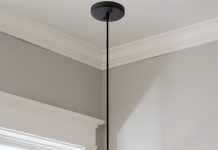Floating floors also called raised or floating floors, do not rest directly on the floor but are raised by means of a metal structure. They are made of modular elements that form a new floor and can be finished with different materials according to the tastes and characteristics of the environment.
The choice of finishing materials, in fact, is very wide now: wood, terracotta, natural stone, marble, ceramic, porcelain stoneware, vinyl, and PVC.
They have had a great development, especially in industrial structures and offices because they offer an economic and practical solution to the needs of integration of systems in the work environment.

Very fashionable in the 70s, they have become interesting again today also for domestic use, especially in the so-called smart buildings (i.e. buildings with many technological systems), but also in the recovery of historical buildings as they are particularly suitable to protect and show historical floors thanks to transparent walkable panels.
Also read: 5+ Awesome Tips to Make Your Living Room Worth Living In
Particularly suitable for open space environments, where the creation of two different levels can serve to ideally separate the various areas, it can be the optimal solution even for smaller environments to which you want to give dynamism and movement.
The floating floor is a good solution for those who want to adapt the present structure to the new design and functional needs, but without expensive masonry work.

The main advantages of a floating floor:
- It is installed in a very short time
- Facilitates the installation and maintenance of the systems avoiding costly masonry work
- It favors energy saving thanks to the insulating effect of the cavity that is formed between the original floor and the floor surface.
Translated and adapted by Noobuzz staff.
Sources: Casa







